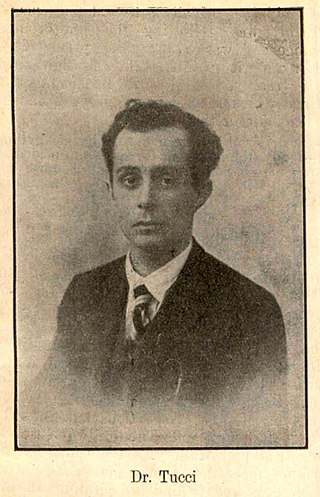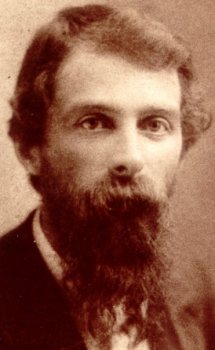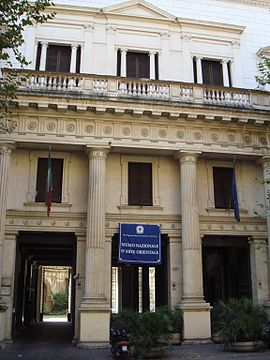
EUR is a residential area and the major business district in Rome, Italy, part of the Municipio IX.

Giuseppe Tucci was an Italian orientalist, Indologist and scholar of East Asian studies, specializing in Tibetan culture and the history of Buddhism. During its zenith, Tucci was a supporter of Italian fascism, and he used idealized portrayals of Asian traditions to support Italian ideological campaigns. Tucci was fluent in several European languages, Sanskrit, Bengali, Pali, Prakrit, Chinese and Tibetan and he taught at the University of Rome La Sapienza until his death. He is considered one of the founders of the field of Buddhist studies.

The National Roman Museum is a museum, with several branches in separate buildings throughout the city of Rome, Italy. It shows exhibits from the pre- and early history of Rome, with a focus on archaeological findings from the period of Ancient Rome.

The Galleria Nazionale d'Arte Moderna e Contemporanea, also known as La Galleria Nazionale, is an art museum in Rome. It was founded in 1883 on the initiative of the then minister Guido Baccelli and is dedicated to modern and contemporary art.

Giuseppe Pellizza da Volpedo was an Italian Divisionist painter. Pellizza was a pupil of Pio Sanquirico. He used a Divisionist technique in which a painting is created by juxtaposing small dots of paint according to a specific colour theory. Although he exhibited often, his work achieved popularity in death through their reproduction in socialist magazines and the acclaim they received from 20th-century art critics.

The "Luigi Pigorini" National Museum of Prehistory and Ethnography was a public and research museum located in Rome, Italy. Established in 1875 and opened in 1876 by Luigi Pigorini, from 2016, its collections became part of the newly instituted Museo delle Civiltà, currently directed by Andrea Viliani. The museum was housed in the Collegio Romano from 1875 to 1923.

The Edoardo Chiossone Museum of Oriental Art in Genoa, Italy is an important collection of Asian art, one of the most significant collections in Europe and in Italy, along with the museums of Venice and Rome.

The Museo Nazionale della Magna Grecia, Museo Archeologico Nazionale di Reggio Calabria or Palazzo Piacentini is a museum in Reggio Calabria, southern Italy, housing an archaeological collection from sites in Magna Graecia.
The Istituto Italiano per l'Africa e l'Oriente (IsIAO), known in English as the Italian Institute for Africa and the Orient, was established in Rome in 1995, as the result of the merging of Italian Institute for the Middle and the Far East (IsMEO) with the Istituto Italo-Africano (IIA). It closed in 2012. Its museum collection is now overseen by the Polo Museale del Lazio.

The Museum of Oriental Art is a museum located in a 17th-century palazzo in the city of Turin, Italy.

The culture of Rome in Italy refers to the arts, high culture, language, religion, politics, libraries, cuisine, architecture and fashion in Rome, Italy. Rome was supposedly founded in 753 BC and ever since has been the capital of the Roman Empire, one of the main centres of Christianity, the home of the Roman Catholic Church and the seat of the Italian Republic. Due to its historical and social importance, Rome has been nicknamed the Caput Mundi, or "capital of the world".

Sphere Within Sphere describes a series of spherical bronze sculptures by Italian sculptor Arnaldo Pomodoro. In 1966, Pomodoro was commissioned to create a 3.5-meter sphere for Expo 67 in Montreal. The success of this sculpture propelled Pomodoro's works into the mainstream, allowing for commissions that would land his sculptures at the Headquarters of the United Nations and the Vatican Museums.
Deborah Klimburg-Salter is an art historian and emeritus professor for non-European art history at the Department of Art History of the University of Vienna. She was also director of the research platform Center for Research and Documentation of Inner and South Asia (CIRDIS). Currently she directs the project "Cultural Formation and Transformation: Shahi Art and Architecture from Afghanistan to the Western Frontier at the Dawn of the Islamic Era" financed by the Austrian Science Fund (FWF) and dedicated to transdisciplinary research.
Giovanni Verardi is an Italian archaeologist specialising in the civilisations of central Asia and India. With extensive academic and fieldwork experience, he has published findings about sites in Afghanistan, Nepal, India, and China in particular. Verardi has joined or directed several long archaeological missions to central Asia, and held positions on numerous Italian scientific boards. He has a particular interest in Indian iconography and history.

The Polo Museale del Lazio is an office of Italy's Ministry of Cultural Heritage. Its seat is in Rome in the Palazzo Venezia.

The Museo di Roma is a museum in Rome, Italy, part of the network of Roman civic museums. The museum was founded in the Fascist era with the aim of documenting the local history and traditions of the "old Rome" that was rapidly disappearing, but following many donations and acquisitions of works of art is now principally an art museum. The collections initially included 120 water-colours by the nineteenth-century painter Ettore Roesler Franz of Roma sparita, "vanished Rome", later moved to the Museo di Roma in Trastevere.

The Museum Giuseppe Gianetti is a ceramics museum located in Saronno, Italy. The Museum includes collections of different types of porcelain, majolica, and ceramics that belonged to the Italian industrialist Giuseppe Gianetti. These showcase more than 200 pieces of Meissen porcelain, which represents the Museum's most substantial collection. Other collections cover Oriental porcelain, Italian and European majolica, and porcelain. The original collections have been expanded to include the Aldo Marcenaro Collection and a collection of contemporary ceramics.

The Museo delle Civiltà is an Italian state museum in the EUR district of Rome.
















